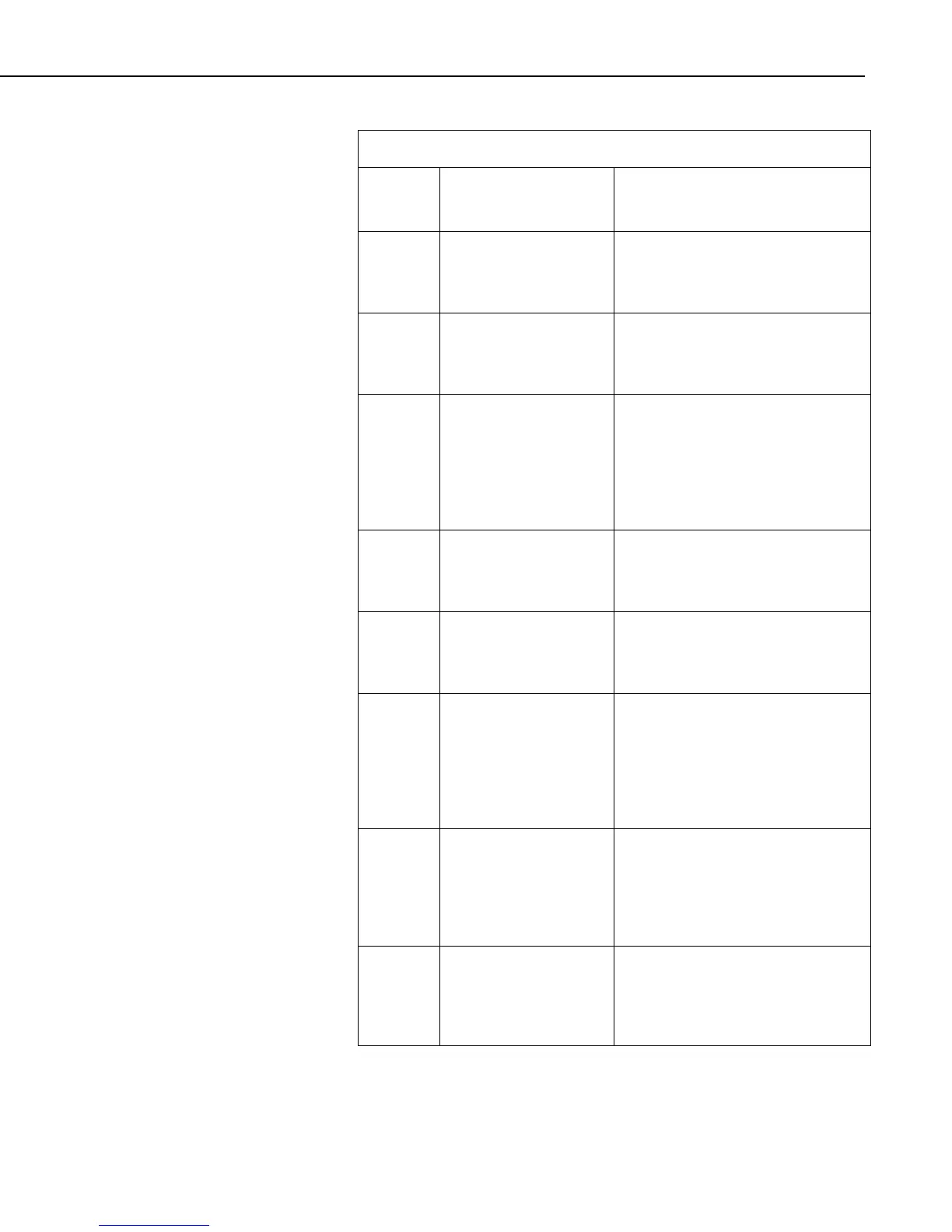Section 14. Troubleshooting Guide
TABLE 14-1. Socket Error Messages
Socket
Error
Number
Message Meaning
User Response to Message
10013 Permission Denied. The
requested socket
connection has refused
the connection.
This is normally a network type of
issue. Check with your computer
network operator.
10024 Too many open files.
Too many open sockets
for the applications
running.
This can occur when you have many
applications that are using sockets
running at the same time.
10047 Address family not
supported by protocol
family. The socket being
addressed does not
support the type of
connection being
attempted.
This message shows up when the
LoggerNet Toolbar comes up but the
server did not come up because
TCP/IP is not installed on the
computer. Install TCP/IP and restart
LoggerNet. (Section 1.2,
Configuration of TC/IP Service)
10055 No buffer space
available. Cannot create
more temporary sockets.
The operating system cannot create
any more socket connection. See the
text above about Maximum Number
of Sockets Open.
10058 Cannot send after socket
shutdown. A message
was sent to a socket that
has been closed.
This would be an indication that an
application is not communicating well
with the server. Check the
application.
10060 Connection timed out. Either the server has crashed and is
not responding or the application did
not maintain the connection to the
server. Try restarting LoggerNet.
This message can also be seen in
connection with the NL100 LAN
interface.
10061 Connection refused. The
LoggerNet server or an
NL100 refused to allow
the socket connection.
This is normally associated with the
NL100 and occurs because the last
connection did not have enough time
to close before a new connection is
requested. Slow down the low level
polling delay interval.
10065 No route to host. The
application is trying to
connect to a host address
that isn’t in the routing
table.
This occurs with remote connections
to a LoggerNet server running on
another computer. The requested host
name can’t be found.
14-3
